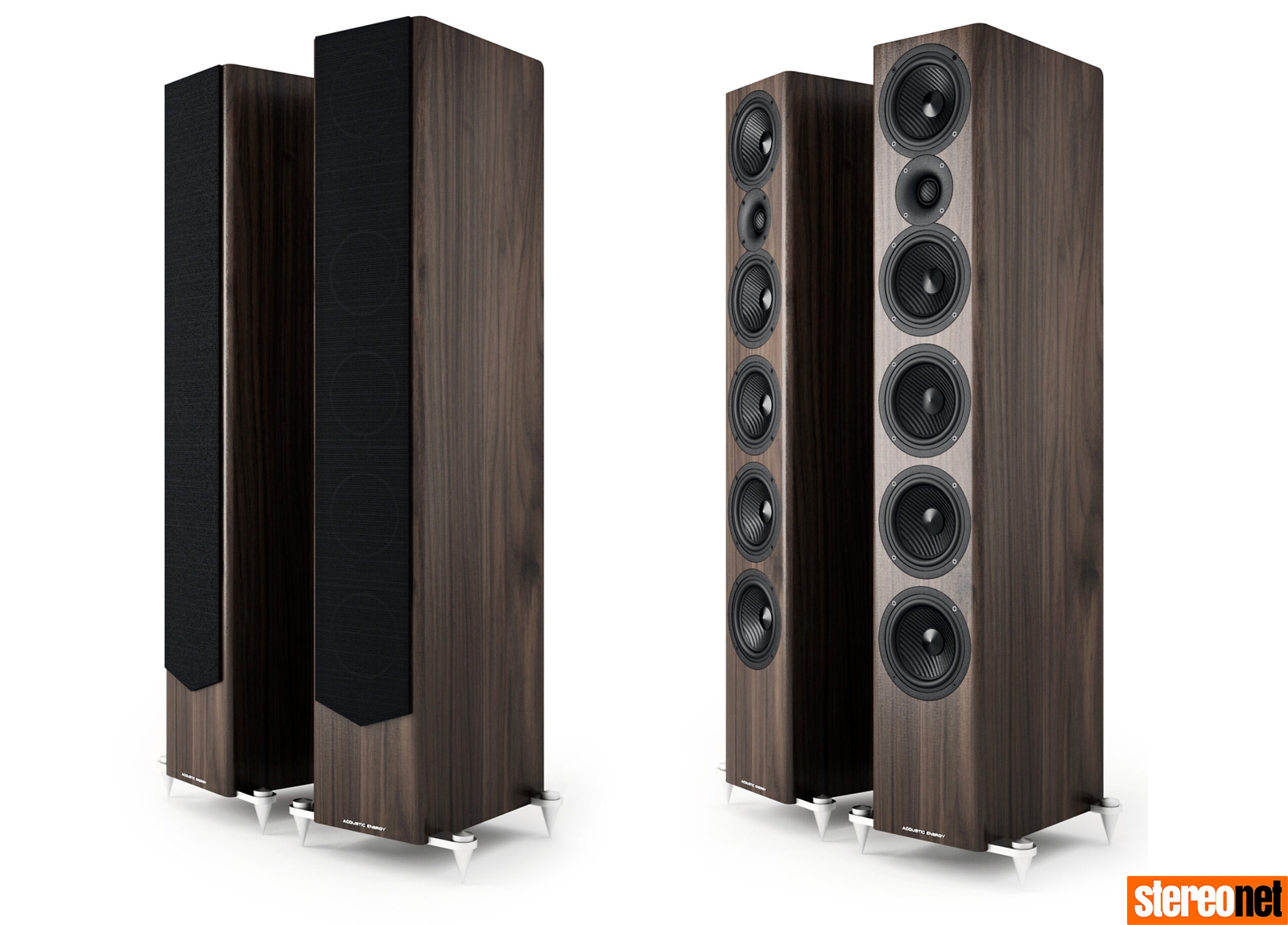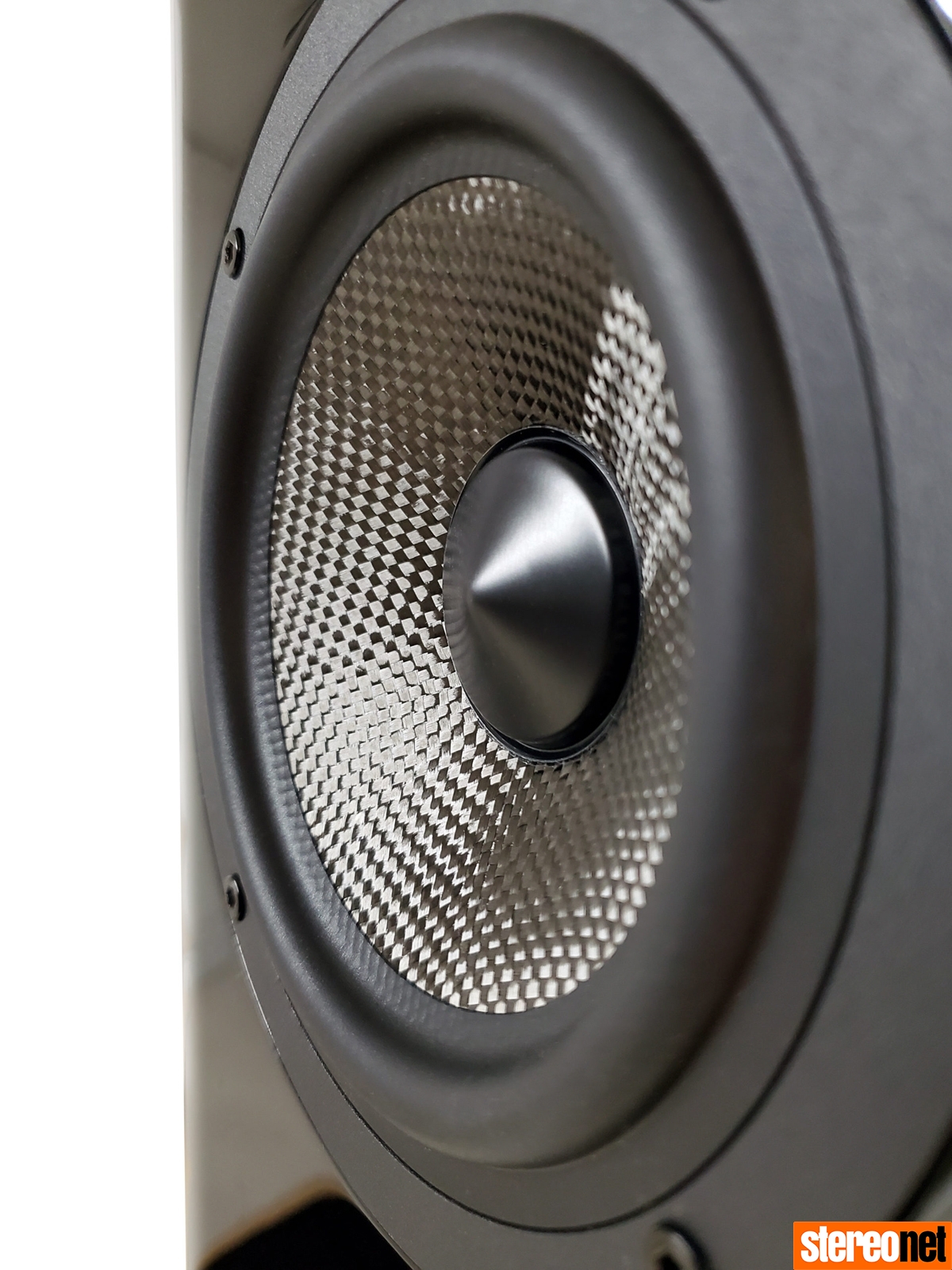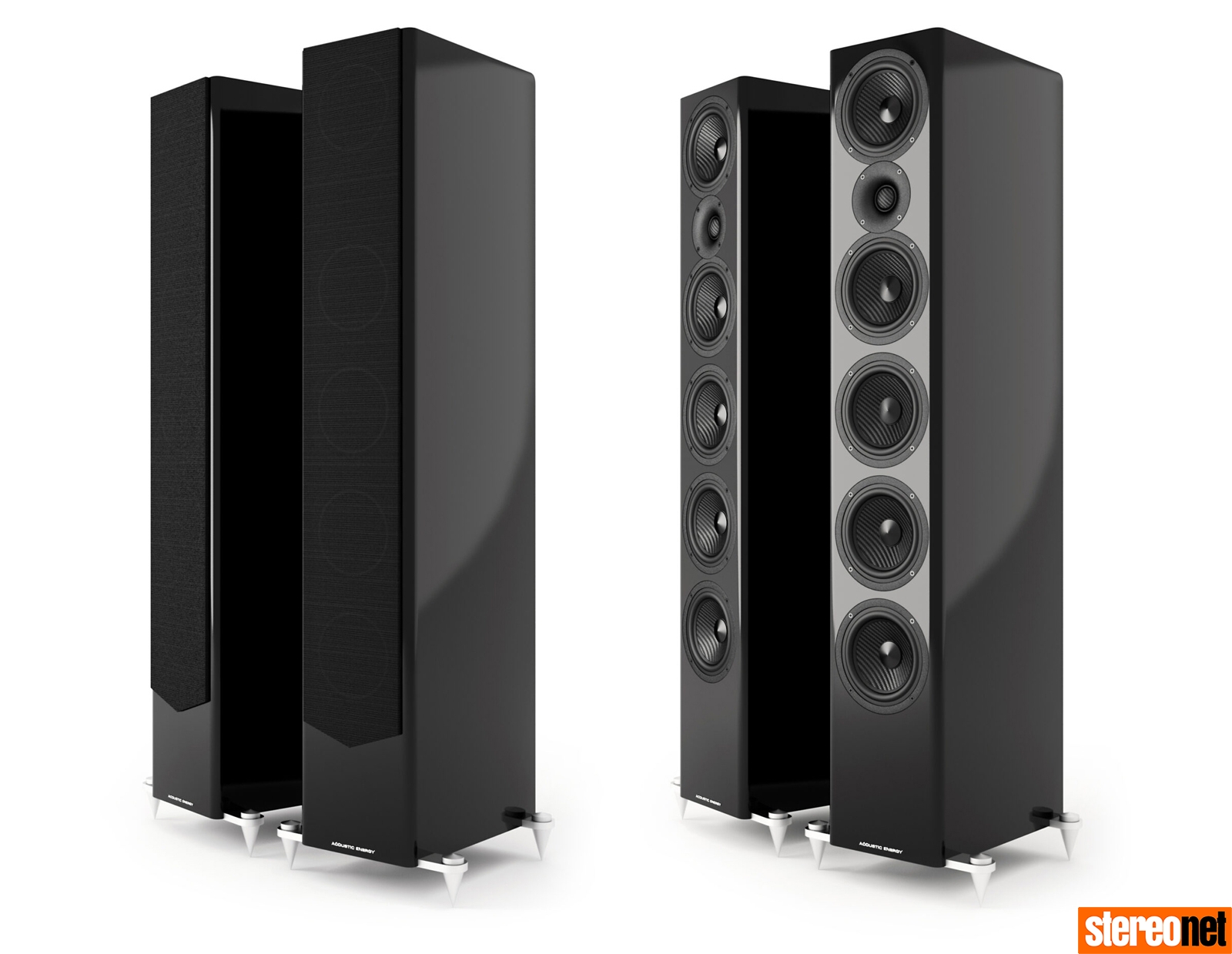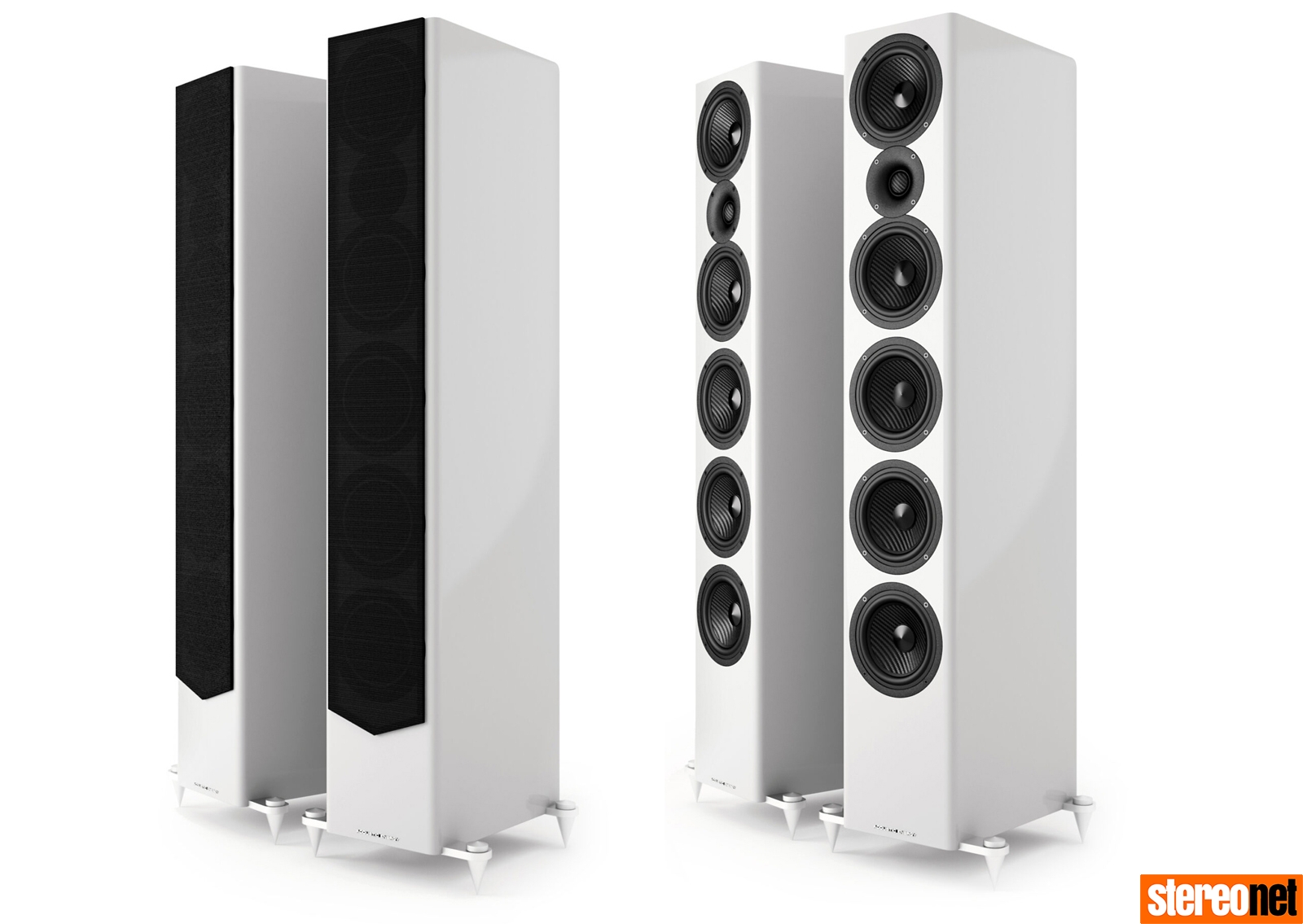Acoustic Energy AE520 Floorstanding Loudspeaker Review

David Price samples this iconic British speaker brand's flagship floorstander…
Acoustic Energy
AE520 Floorstander
£3,499 RRP

If you've got mega-money to spend on a loudspeaker, the problem is the huge choice you have. There are umpteen wildly differing exotic products on sale, one of which will hopefully tick all your aesthetic and audiophile boxes. If you've got a fraction of that, then you'll pretty much get what you're given; most cheap speakers follow the same two-way, reflex-ported orientation. In the mid-market, however, things get challenging for designers; they've got enough budget to do something interesting, but still, the money's tight…
That's why for yours truly, there's something special about speakers like Acoustic Energy's new AE520. At the price, it's in a tricky market sector and therefore represents a stern test of its company's research, development, design and manufacturing mettle. The brand has an illustrious history, but in recent years has been focused on mass-market budget boxes. Now though, it's going upmarket, and this is its new flagship – for the moment, at least…
I was most impressed by the little AE500 stand mounter eighteen or so months ago and then followed the lovely AE509 floorstander. The latter broke the prime directive for loudspeakers for actually sounding better than its smaller standmount version. Typically, the bigger box adds more problems than it solves, and you often find the smaller speaker in the range is more musical and engaging, despite having less extended bass. With the AE509 however, it was better all round – and especially impressive against its price rivals.
CARBON DATING
The new AE520 you see here has a job of work to do, then. It's bigger and heavier than the AE509, and with this brings assorted problems as well as potential benefits. The way that Acoustic Energy's chief designer Matt Spandl has got around the problem of such a large cabinet – it measures 1,130x185x320mm and weighs 30kg – is by making the most out of its true three-way design. Both midband drivers sit in their own sealed sub-enclosure within the main cabinet, completely physically separate to three bass drive units below. The latter are reflex-loaded by the company's familiar 'slot' port which – as it happens – also makes a convenient carrying handle whilst moving this sizeable speaker around!
This effectively decouples the drivers dealing with the most sensitive part of human hearing – the midband or 'presence' region circa 1kHz – from the drive units moving the most air. Things are further bolstered by the company's Resonance Suppression Composite cabinet material, a type of constrained layer damping which makes the box as inert as possible. Also, extra internal damping is used compared to the AE509, accounting for much of its additional 8kg per speaker weight.
The cabinet is a serious piece of work then, but I am more intrigued by what it was built to house – those carbon fibre drive units. Spandl says, "this is a dream material – once you've mastered working with it!" That caveat is interesting because off the record he's told me that the company had to do a lot of finessing to get it to behave how it should. The development was done for the AE500 a while ago though, and so trickles down – or up – to the new AE520.

"Carbon fibre has the same stiffness and pistonic qualities as hardened aluminium, yet is half the mass", explains Spandl. "This gives improved transient response and low-level detail retrieval." Another benefit is that in the way it's used by Acoustic Energy – as a compound construction of carbon and resin – it has smoother break-up modes than more conventional stiff drive units. "This means it doesn't need such a complicated crossover or heavy-duty surround materials", he adds.
I've always been a fan of carbon fibre drivers. I own a pair of classic Sony SS-5050 'Carbocon' monitors from the late nineteen seventies and loved the drivers that Audax were doing for DIY speaker builders in the nineties – used, for example, in World Audio Design's KLS-3. Yet for me, the icing on the cake is the fact that all the AE520's transducers – even the tweeter – use this material. This makes the design unique, and of special interest for this reason alone. The speaker combines a 25mm carbon fibre dome tweeter with a cast aluminium WDT waveguide, with twin 125mm carbon fibre coned midrange drivers with rubber surrounds and large 35mm voice coils. Below this are three specially designed carbon fibre coned 125mm woofers, which Spandl claims give the power of a single 250mm unit. Crossover frequencies are 2.8kHz between the tweeter and midrange drivers and 373Hz downwards for the bass.
Still, even with a decent cabinet and fancy drivers, it's perfectly possible to ruin a loudspeaker by poor driver matching. To this end, the AE520 gets a complex fourteen element crossover with air core inductors and polypropylene film capacitors in the signal path. The low-frequency circuit is physically isolated on a separate PCB to reduce crosstalk between the components. Wiring is oxygen-free multi-strand copper throughout.
Personally, I think the AE509 is more attractive than the larger AE520 because the latter looks almost too complex. Still, things are assuaged somewhat by a nice range of finishes; there's a choice of piano gloss white or black, and American walnut wood veneer. Build quality is as good as you can expect at this price; it's very decent, albeit not as lavish as B&W's slightly more expensive 702 Signature, for example. Top marks for the magnetic grille which removes easily; this speaker sounds best with it off in my view. Its large cabinet sits securely on twin solid aluminium bar supports, rather than the usual pedestal stand. Spikes are supplied, should you wish to use them.
Acoustic Energy's measurements claim a frequency response of 30Hz-28kHz (+/-6dB). It's a little naughty to use -6dB cut off points (whatever happened to the -3dB point that everyone used to use?), but the AE520 does go low. Interestingly, Spandl says he could have got it lower still, but instead opted to dial in a bit more efficiency. There's always a trade-off here; all that extra cabinet volume has yielded just 2Hz extra extension, but returns a respectable claimed efficiency figure of 90dB, with a nominal impedance of 6 ohms. This suggests it should be valve friendly, and so one of my tube amplifiers was wheeled out for listening duties – a World Audio Design K5881, with MF Audio Passive Preamp (silver). To balance things out, a conventional Class AB Exposure 3010S2D solid-state integrated also did the business. My source was a Chord Hugo TT2, a dry and neutral sounding DAC.

SOUND QUALITY
The new AE520 has an interesting sound - and in a good way. That plethora of carbon fibre drivers gives a seamless tone and one that's quite self-effacing. It's deep, silky, dark, luxurious – all the words you'd hear used to describe a box of chocolates, I suppose! What's most conspicuous is its lack of noise; you sense this when you hear a good electrostatic speaker for the first time, for example. Suddenly you realise you're not listening to a pageant of drive units all adding their own colourations (good and bad) to the music, as they bang and crash along together in time.
That's why, paradoxically, some might think this speaker to be quite an anti-climax. It doesn't jump up at you and try to lick you all over like a friendly puppy; instead, it's slightly standoffish, delivering a smooth, even, refined and sophisticated sound devoid of any particular colouration. I would say that its smaller AE509 floorstanding brother actually has more character – it's flawed but fun. The AE520, by contrast, is more mature and capable, but it still seems as fresh as just-dried paint.
As well as its seamless and dark tonality, the AE520 has great scale. It's a large loudspeaker that's closer to some designs at nearly twice its price, in respect of both physical size and also soundstaging. Its AE509 little brother, despite being not that much shorter, sounds substantially more constrained, especially in the scale of the recorded acoustic and also the amount of bass it can push out without getting out of breath. As a quick spin of New Order's electro classic True Faith showed, the extra size confers a more expansive sound, with a wider span left to right and front to back.
Cue up A RollerSkating Jam Named Saturdays by De La Soul, and you're hit by the sheer scale of what you might previously have thought to be quite an averagely recorded pop record. The AE520 was big and bold, with a barrel-chested feel to the way it went about making music. There was great projection of the lead vocal, rock-solid between the speakers and pushing up into towards my ceiling. At the same time, the beatbox sounded gutsy, with large amounts of air being shifted by the bass drum sound. In the midband, there was a lot of detail coming out of the busy mix, and the hi-hat cymbals were crisp and percussive. Above all this, the headline news was the airy, spacious and expansive feel that this speaker brought to music.

This combination of the AE520's tonal smoothness allied to its large, visceral sound is really what defines this speaker, yet it isn't everything. The lightweight of its carbon fibre cones and dome make for a fast and agile sound. This is quite perplexing at first because you don't normally associate tonally smooth speakers with speed and attack. I found that fast-paced rock music like Rush's New World Man was quite spectacular in some respects; this speaker was able to separate out all the different strands of the mix and string them all together in a really musically cohesive way. There was no sense of things being leaden, rather it all came over in a forceful and propulsive way.
One of the bonuses of the AE520 over its smaller sibling is its midband clarity; it has a noticeably more inert quality that means notes can decay in a more natural way. The hard-hit snares on the Rush track had more impact because the tail end of the sound melted away into a darker and quieter place, rather than being submerged in the general noise of the cabinet, like its cheaper brother. Indeed it really pulls ahead in this respect and gives other price rivals a hard time. This big Acoustic Energy doesn't have the overhang in the midband that many other mid-priced floorstanders do, and that confers it a major advantage.
This facet of its character extends to the bass. Cue up Madonna's Frozen, and you can feel vast tracts of low frequencies coming your way, from that fantastic William Orbit production. Yet it's not so much the extension that really makes this speaker special, it's the low-end headroom. All those extra 'cubic inches' moving the air mean that the bottom end has an unconstrained quality that's usually the province of larger floorstanders. The psychedelic rock of Love's A House is Not a Motel, with its big, walking bassline was quite a thing to hear; the bass guitar work wasn't particularly overpowering, yet sounded far more unconstrained than Spendor's similarly priced A7, for example. Unlike the latter, there was no sense of compression or breathlessness from the AE520, even on the song's crescendos.
Downsides? Nothing to write home about, really. The main issue is that this speaker may actually overpower some domestic listening rooms; it can go very loud in a relaxed way, yet carries with it a lot of energy fed into the boundary wall behind. Even with sympathetic placement – up to nearly a metre out into the room – it could blow your wig off in anything but a large space. The other point to add is that some music fans – brought up on mid-forward, nasal sounding modern speakers – might think it a little tonally dull. It best suits a revealing, explicit sounding front end; given this, it flies.

THE VERDICT
Once the king o f fast and visceral sounding high-end mini-monitors, Acoustic Energy is slowly carving out a new niche for itself as a purveyor of sophisticated yet musical mid-price designs. The big AE520 builds on this, and the result is a super-capable floorstander that's good enough to provide a bridge to real exotica. If you've got a large listening room and a serious source and amplifier to back it up, this should be right at the top of your audition list.
f fast and visceral sounding high-end mini-monitors, Acoustic Energy is slowly carving out a new niche for itself as a purveyor of sophisticated yet musical mid-price designs. The big AE520 builds on this, and the result is a super-capable floorstander that's good enough to provide a bridge to real exotica. If you've got a large listening room and a serious source and amplifier to back it up, this should be right at the top of your audition list.
For more information visit Acoustic Energy
David Price
David started his career in 1993 writing for Hi-Fi World and went on to edit the magazine for nearly a decade. He was then made Editor of Hi-Fi Choice and continued to freelance for it and Hi-Fi News until becoming StereoNET’s Editor-in-Chief.
Posted in: Applause Awards | 2022 | 2020 | Loudspeakers | Floorstanding | Hi-Fi
JOIN IN THE DISCUSSION
Want to share your opinion or get advice from other enthusiasts? Then head into the Message
Forums where thousands of other enthusiasts are communicating on a daily basis.
CLICK HERE FOR FREE MEMBERSHIP
Trending
applause awards
Each time StereoNET reviews a product, it is considered for an Applause Award. Winning one marks it out as a design of great quality and distinction – a special product in its class, on the grounds of either performance, value for money, or usually both.
Applause Awards are personally issued by StereoNET’s global Editor-in-Chief, David Price – who has over three decades of experience reviewing hi-fi products at the highest level – after consulting with our senior editorial team. They are not automatically given with all reviews, nor can manufacturers purchase them.
The StereoNET editorial team includes some of the world’s most experienced and respected hi-fi journalists with a vast wealth of knowledge. Some have edited popular English language hi-fi magazines, and others have been senior contributors to famous audio journals stretching back to the late 1970s. And we also employ professional IT and home theatre specialists who work at the cutting edge of today’s technology.
We believe that no other online hi-fi and home cinema resource offers such expert knowledge, so when StereoNET gives an Applause Award, it is a trustworthy hallmark of quality. Receiving such an award is the prerequisite to becoming eligible for our annual Product of the Year awards, awarded only to the finest designs in their respective categories. Buyers of hi-fi, home cinema, and headphones can be sure that a StereoNET Applause Award winner is worthy of your most serious attention.





